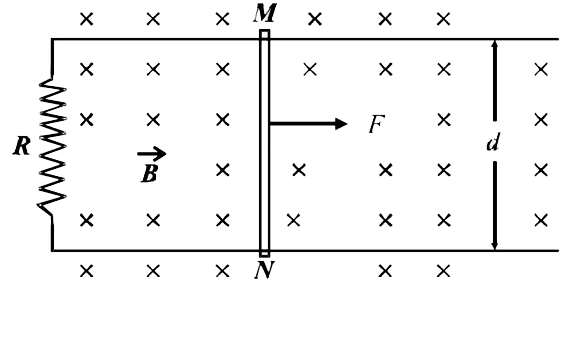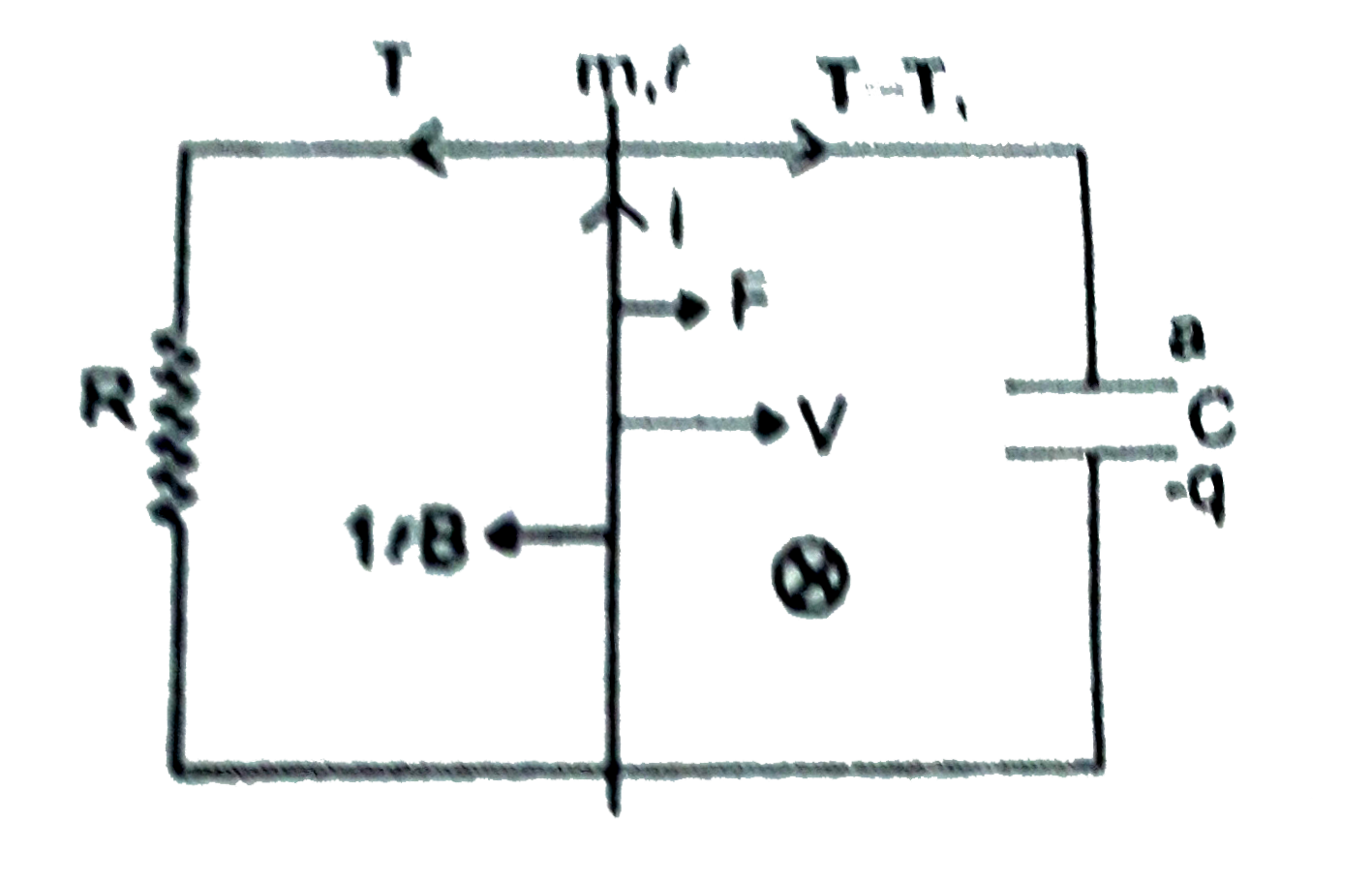A conducting rod AB moves parallel to x-axis in the x-y plane. A uniform magnetic field B pointing normally out of the plane exists throughout the region. A force F acts perpendicular to the rod, so that the rod moves with uniform velocity v. The force F is given by (neglect resistance of all the wires)

vB2l2Re−t/RC
vB2l2R
vB2l2R(1−e−t/RC)
vB2l2R(1−e−2t/RC)
The correct Answer is:C
Formation of PbSO4 is prevented in extraction of lead by carbon reduction
Topper's Solved these Questions
Similar Questions
A conducting rod AB moves parallel to the x-axis (see Fig.) in a uniform magnetic field pointing in the positive z-direction. The end A of the rod gets positively charged.
 .
.
View SolutionA conducting rod of resistance r moves uniformly with a constant speed v in a uniform magnetic field. If the rod keeps moving uniformly, then the amount of force required is

View Solution
Knowledge Check
A conducting rod AB moves parallel to x-axis in a uniform magnetic field pointing perpendicular and into the plane of paper. The end A of the rod
 Agets positively chargedBgets negatively chargedCremains neutralDgets positively charged first and then negatively charged
Agets positively chargedBgets negatively chargedCremains neutralDgets positively charged first and then negatively chargedA conductor rod AB moves parallel to X-axis in a uniform magnetic field, pointing in the positive Z-direction. The end A of the rod gets-
 Apositively chargedBnegatively chargedCneutralDfirst positively charged and then negatively charged.
Apositively chargedBnegatively chargedCneutralDfirst positively charged and then negatively charged.A rod AB moves with a uniform velocity v in a uniform magnetic field as shown in figure.
 AThe rod becomes electrically chargedBThe end A becomes positively chargedCThe end B becomes positively chargedDThe rod becomes hot because of Joule heating
AThe rod becomes electrically chargedBThe end A becomes positively chargedCThe end B becomes positively chargedDThe rod becomes hot because of Joule heating
Two long parallel horizontal rails a, a distance d aprt and each having a risistance λ per unit length are joing at one end by a resistance R. A perfectly conduction rod MN of mass m is free to slide along the rails without friction (see figure). There is a uniform magnetic field of induction B normal to the plane of the paper and directed into the paper. A variable force F is applied to the rod MN such that, as the rod moves a constant current flows through R.

(i) Find the velocity of the rod and the applied force F as function of the distance x of the rod from R.
(ii) What fraction of the work done per second by F is converted into heat?
View Solution
Find the velocity of the moving rod at time t if the initial velocity of the rod is v and a constant force F is applied on the rod. Neglect the resistance of the rod.
View SolutionFind the velocity of the moving rod at time t if the initial velocity of the rod is v and a constant force F is applied on the rod.Neglect the resistance of the rod.

View SolutionA small conducting rod of length l, moves with a uniform velocity v in a uniform magnetic field B as shown in fig __

View SolutionA conducting rod of length 2l is rotating with constant angular speed w about its perpendicular bisector. A uniform magnetic field B exists parallel to the axis of rotation. The e.m.f. induced between two ends of the rod is

View Solution